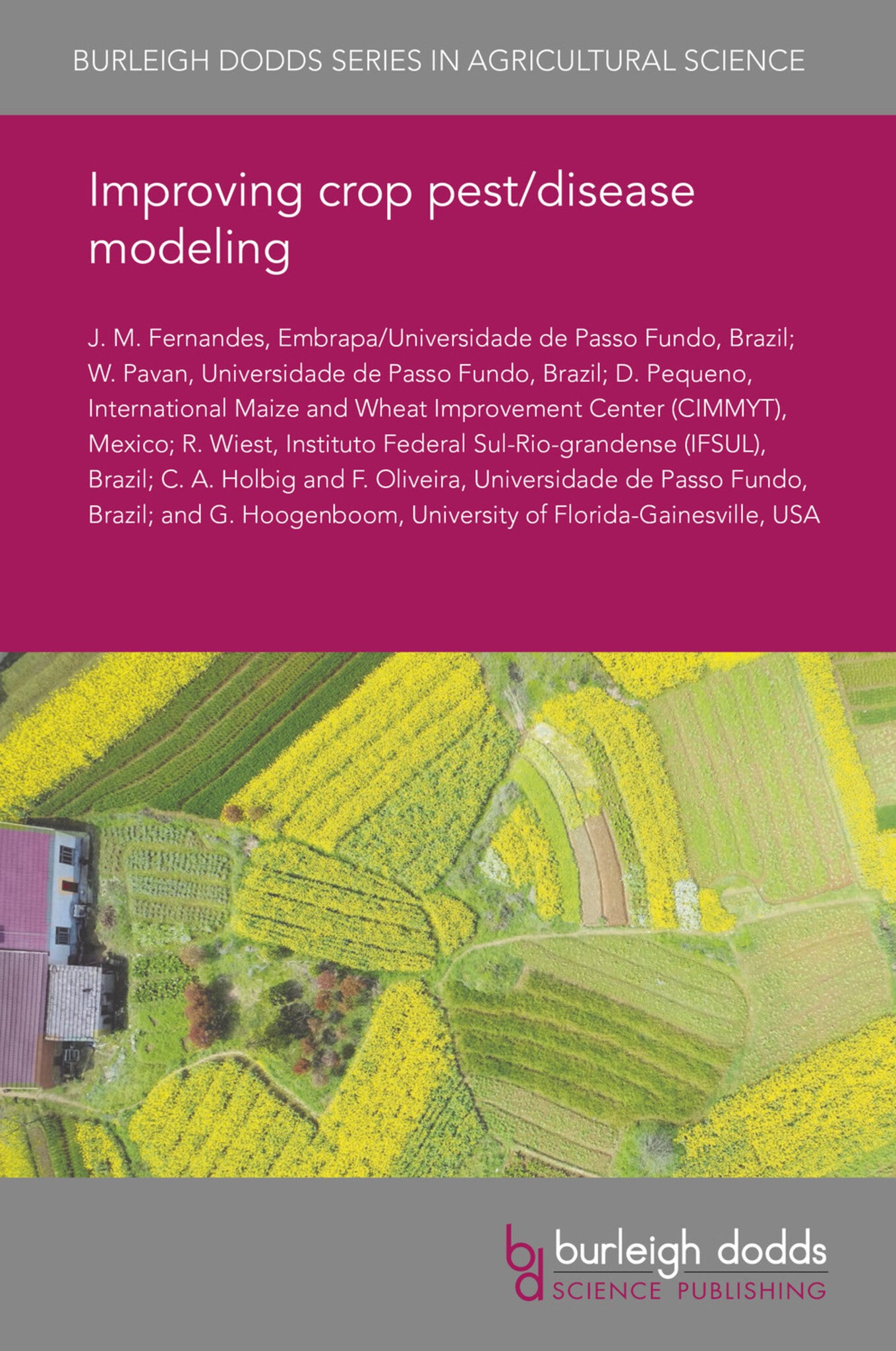We're sorry. An error has occurred
Please cancel or retry.
Improving crop pest/disease modeling

Some error occured while loading the Quick View. Please close the Quick View and try reloading the page.
Couldn't load pickup availability
- Format:
-
02 December 2019


TECHNOLOGY & ENGINEERING / Agriculture / Sustainable Agriculture, Agronomy and crop production, TECHNOLOGY & ENGINEERING / Agriculture / Agronomy / Crop Science, TECHNOLOGY & ENGINEERING / Pest Control, Sustainable agriculture, Pest control / plant diseases

1 Introduction 2 Approaches to model coupling 3 The pest and disease damage module (PEST) 4 Integrating a crop model and pest/disease models using Message Passing Interface (MPI) 5 CROPGRO-soybean: insect pest and disease damage 6 Future trends and conclusion 7 Where to look for further information 8 References



